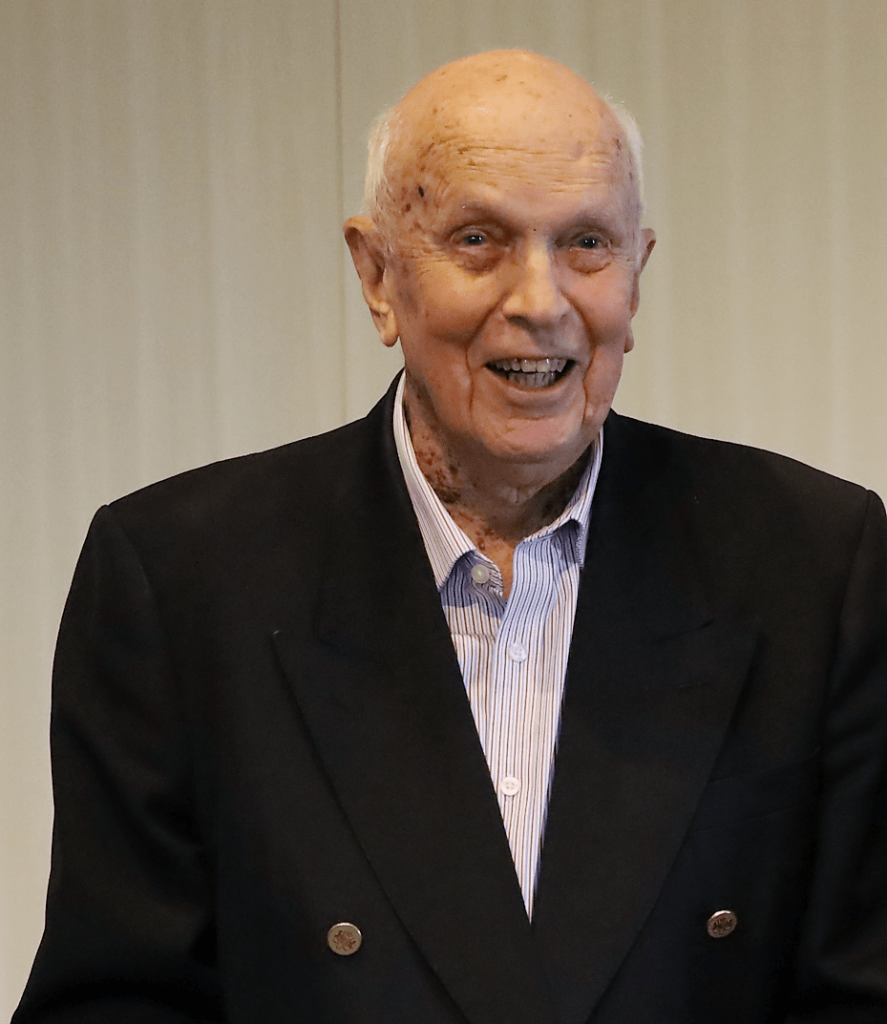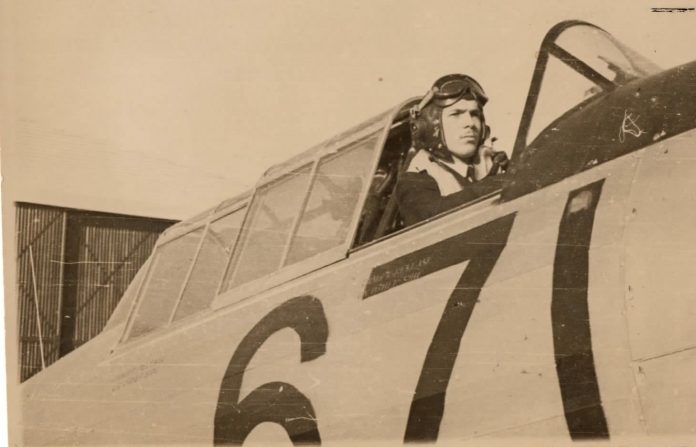Norman Ashworth could well have been one of those ‘magnificent men in their flying machines’.
Norman, who recently celebrated his 90th birthday, started a long and distinguished career in the RAAF learning to fly in Tiger Moths, machines that he says weren’t much more than cardboard held together with wire.

In a 35-year career with the RAAF, Norman dined with Queen Elizabeth II, worked with prime minister Bob Menzies, served as commanding officer at the Pearce Airbase, flew Macchi jets, and even has a mountain named after him in the Antarctic.
Born in Sydney on May 27, 1933, Norman moved to Perth in 1945 with his mum Agnes when she remarried, after she and Norman’s Dad separated during the Second World War.
His final years of school were at Perth Modern where he joined the Air Training Corps and dreamed of becoming a meteorologist when he left school.
Norman was also in the Boy Scouts where he had earned a meteorologist’s badge.
The RAAF had no jobs going for meteorologists, but they were looking for pilots.
So, in 1951, 18-year-old Norman enlisted in the RAAF, graduating at the top of his class as a pilot from RAAF College, at Point Cook, just outside Melbourne.
He went on to fly a wide variety of single-engine Tiger Moths and Wirraways and multi-engine and jet aircraft, including his beloved Mustang.

Norman says the Tiger Moths were hard work.
“Because they flew so slowly, they were much more affected by the wind near the ground and they were open cockpits, so you were exposed to the elements,” he says.
At the time the Airforce was transitioning from a wartime footing, shaking off some of its devil-may-care attitude and becoming a more professional organisation.
“After training, my first posting was to a Citizen Airforce squadron which flew Mustangs, so I learned to fly the single engine wartime fighter. It’s still the best aeroplane I’ve ever flown.
“It was a huge step up from the Tiger Moth.”
In 1955, after six months in Sydney he did a jet fighter pilots course at a time when the Airforce was moving from piston-engine to jet aircraft.
Postings to Adelaide and an advanced navigators course followed and then two years instructing navigators and pilots and flying Dakotas used as navigation trainers.
“I had the best of both worlds. I was doing a ground job nominally but also getting in a fair amount of flying.”
In 1959 Flight Lieutenant Ashworth was selected as an aide-de-camp to Governor General Sir William Slim.
“The Governor General had three ADCs, army, navy and airforce. Whenever he went anywhere an ADC was with him to introduce him to people and let him know what was going on.
“There was a rule that one ADC always had to be in the house at Canberra, one with the Governor General and one with Lady Slim if she went off separately.
“I don’t think I was quite cut out for that level of social graces, particularly with Lady Slim.
“You met all sorts of interesting people though. The Prime Minister, Bob Menzies, was a regular visitor to Government House.”
During a posting to the RAAF School of Air Navigation in the Victorian town of Sale, he met and married a young country primary school teacher, Margaret Stewart.
Before their wedding Norman, now Squadron Leader Ashworth, volunteered for the RAAF Antarctic Flight which in those days was based at Mawson, where there were two planes, a Dakota and a Beaver.
“The plan was that in the summer of 1960/61 I would go with the new flight of people down to Antarctica to have a look at it and then the following year I would organise the relief flight.
“But in December 1960 a blizzard destroyed the Dakota and Beaver. That was not an uncommon thing happening in Antarctica.”
Norman was sent on a three-month cruise to Antarctica to assess the situation and it was decided to send him back with a Beaver float plane.
“The idea was to have a Beaver which was a single-engine float plane on board the ship, put it over the side and I’d go flying up and down the coast taking photographs and mapping.
“It was a fascinating place.”
The reward for Norman’s efforts was to have a 2000-metre mountain named in his honour, Mt Ashworth.
“It’s in amongst a heap of other mountains so all you can really see is a bump in the snow.”
Married in 1962, his first child Sally Jane was born in Canberra a year later, where Norman had been posted to the Directorate of Statistics, followed by Andrew; after moving to Sydney in 1968, Geoffrey followed.
Climbing the military ranks, Norman’s positions included Commanding Officer of Number 10 Squadron, and the Officer Training School; a stint at the Joint Services Staff College in Canberra, where he was given advanced training along with officers from several Commonwealth countries.
In 1976 he was promoted to Group Captain and spent two years as Air and Defence Attaché at the Australian Embassy in Jakarta.
Back in Australia, he was promoted to Air Commodore and became Officer Commanding of RAAF Base Pearce, here in WA, where he spent two years.
His main role at Pearce was advanced pilot training on Macchi jet aircraft. Maritime aircraft patrolling the Indian Ocean were also based there.
The Airforce provided the guard of honour when Queen Elizabeth II and Prince Philip arrived at the showgrounds and Norman met them and took them to inspect the guard of honour.

Later at a Royal Agricultural Society lunch, Norman and his wife sat opposite the Queen.
His final posting was to RAAF Operational Command in Sydney. Working for the Department of Defence back in Canberra saw out Norman’s military career in 1998. Retirement at 55 was compulsory for an air commodore.
After 37 years in the Airforce and living in 17 different married quarters, in retirement Norman and Marg moved to Perth, getting involved in the project to build an replica of Captain Cook’s ship, HMS Endeavour.
He also researched and wrote The
Anzac
Squadron
tracing the history of the No 461 Squadron and the three years they spent seeking out U-Boats in the battle of the Atlantic.
And just to round things out Norman also flew in the last flying Dakota aircraft that was gifted to the Airforce Association’s museum in Bullcreek. The plane was flown in from Adelaide to Pearce and Norman was co-pilot on the flight from Pearce to Perth Airport where it was taken by road to the museum.





























